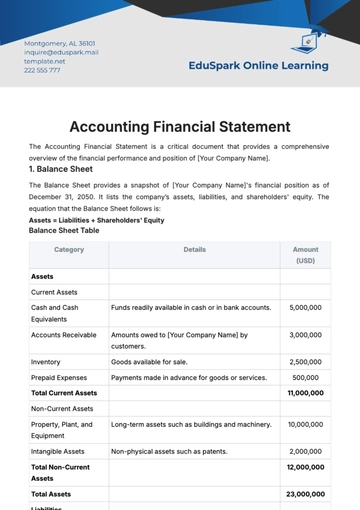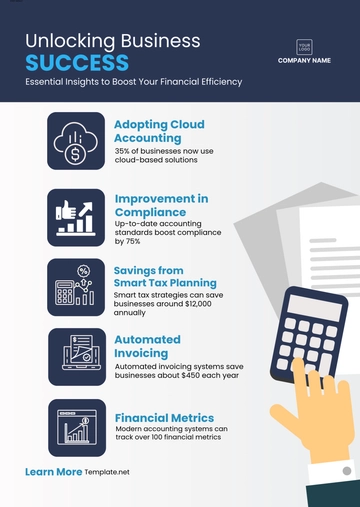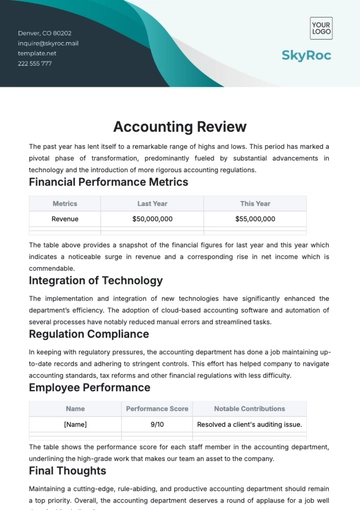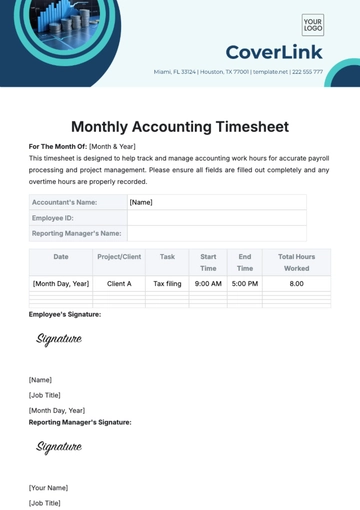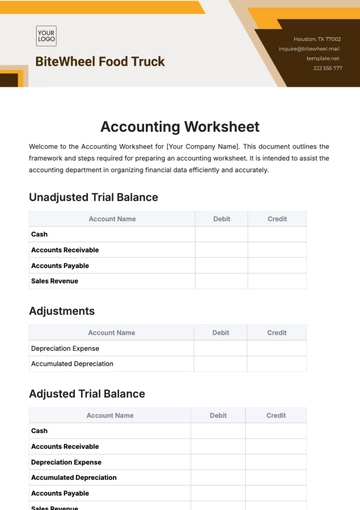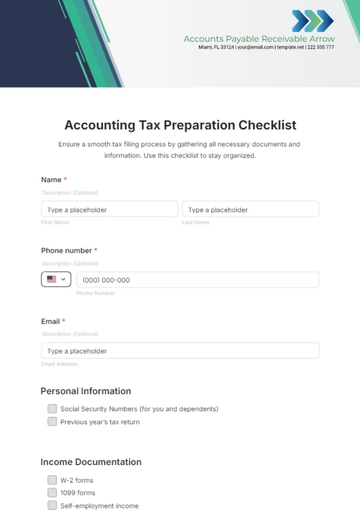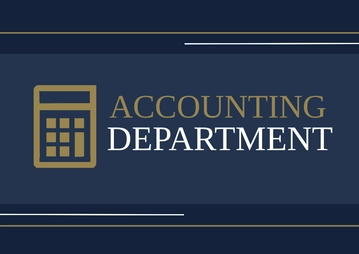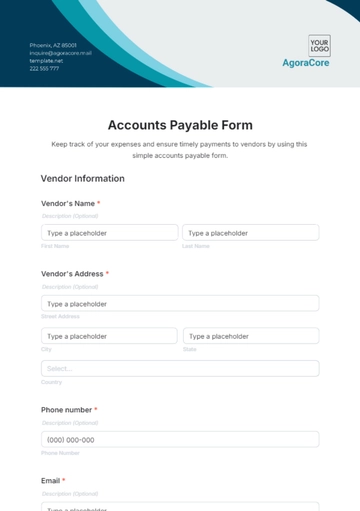Free Advanced Account Reconciliation Guide
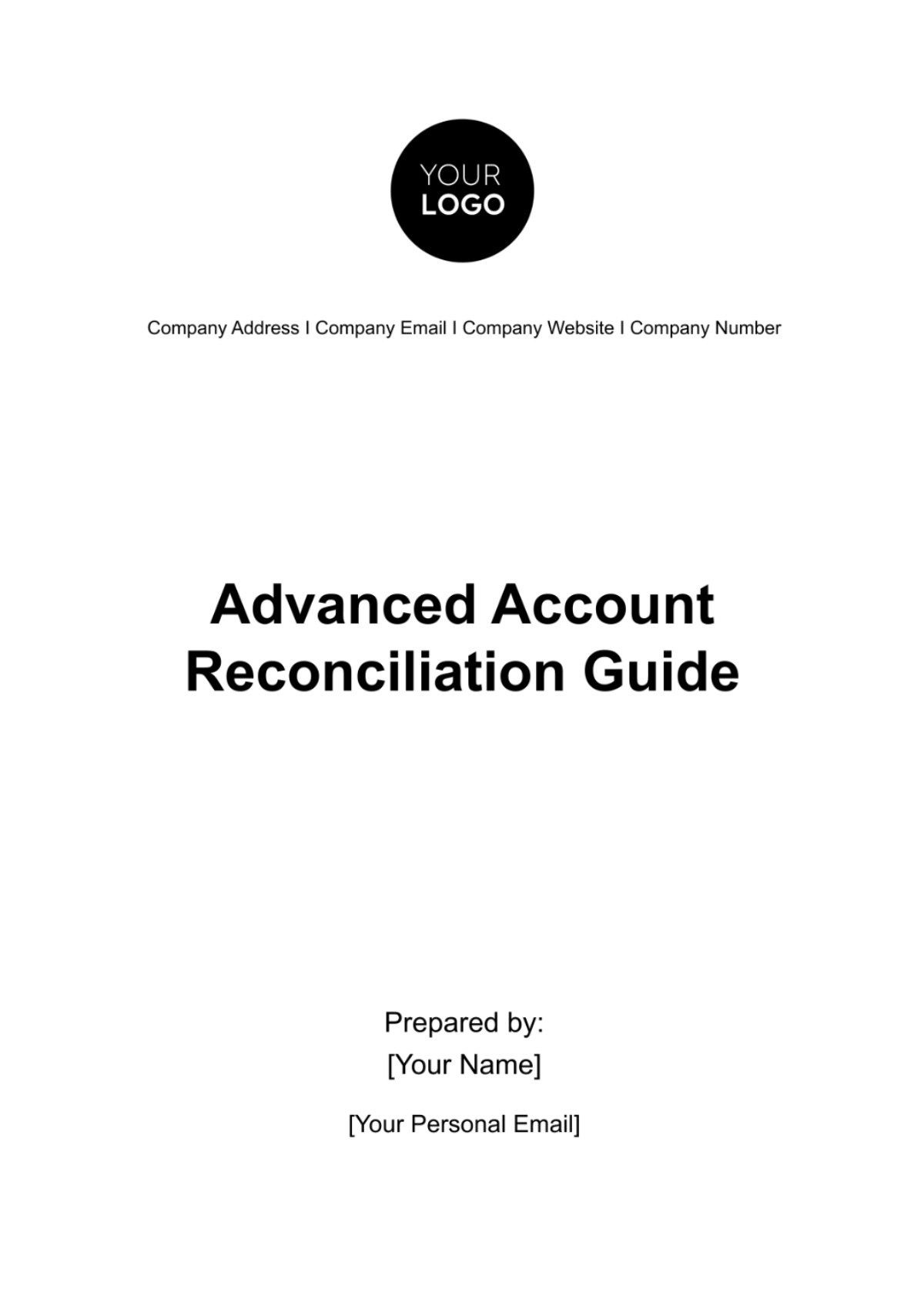
I. Introduction
A. Purpose of the Guide
Welcome to the Advanced Account Reconciliation Guide, a strategic resource crafted to empower financial professionals in mastering the intricacies of advanced reconciliation. The primary purpose of this guide is to equip you with the knowledge and tools needed to navigate the complexities of financial transactions, ensuring the accuracy and reliability of your organization's financial records. By providing a comprehensive overview of advanced reconciliation techniques, this guide aims to enhance your skills, streamline reconciliation processes, and contribute to the overall financial health of your organization.
B. Importance of Advanced Reconciliation
In the dynamic landscape of modern finance, the importance of advanced reconciliation cannot be overstated. As organizations engage in diverse and complex transactions, the risk of errors and discrepancies escalates. Advanced reconciliation plays a pivotal role in mitigating these risks by providing a systematic approach to uncovering inaccuracies, ensuring compliance with regulatory standards, and supporting informed decision-making. Through in-depth insights and practical examples, this guide underscores how mastering advanced reconciliation is key to maintaining financial integrity and bolstering the credibility of financial statements.
C. Target Audience
Designed for financial managers, accountants, auditors, and professionals immersed in the intricacies of financial reconciliation, this guide caters to those seeking to elevate their expertise. Whether you are grappling with intercompany transactions, managing accounts in multiple currencies, or navigating complex business structures, the guide offers tailored strategies and best practices. By addressing the unique challenges faced by financial professionals, it aims to foster a community of practitioners well-equipped to handle the nuances of advanced reconciliation.
II. Overview of Advanced Reconciliation
A. Definition and Importance
Advanced reconciliation transcends traditional transaction matching, encompassing a sophisticated approach to ensure the accuracy of financial records in complex environments. This section delves into the intricacies of advanced reconciliation, emphasizing its pivotal role in uncovering discrepancies, supporting compliance efforts, and providing a foundation for strategic decision-making. By mastering advanced reconciliation, organizations can fortify their financial controls and maintain a robust foundation for sustainable growth.
B. Distinction from Basic Reconciliation
While basic reconciliation focuses on straightforward comparisons, advanced reconciliation introduces a nuanced perspective to address the challenges posed by diverse account types and intricate financial scenarios. This section highlights the fundamental differences, emphasizing the need for a more comprehensive understanding of account relationships, transaction nuances, and the impact of complex financial structures. By distinguishing between basic and advanced reconciliation, financial professionals can tailor their approaches to match the sophistication of their organization's financial landscape.
C. Benefits and Risks
The benefits of advanced reconciliation extend beyond mere accuracy, encompassing enhanced compliance, improved decision-making, and strengthened internal controls. However, with these benefits come inherent risks, such as increased complexity, potential data integrity challenges, and heightened fraud risks. This section provides a balanced exploration of the advantages and risks associated with advanced reconciliation, guiding financial professionals in optimizing their approaches to achieve optimal financial control.
III. Preparing for Advanced Reconciliation
A. Establishing Reconciliation Policies
1. Defining Reconciliation Objectives
Define clear reconciliation objectives aligned with your organization's strategic goals. Objectives may include ensuring the accuracy of financial statements, expediting the resolution of discrepancies, and facilitating a seamless audit process. By establishing specific objectives, you create a framework that guides reconciliation efforts and aligns them with broader organizational priorities.
2. Setting Clear Policies and Procedures
Document comprehensive reconciliation policies and procedures to provide a roadmap for your team. Clearly outline the steps involved in reconciliation, including data verification, matching processes, and documentation requirements. Additionally, define roles and responsibilities within the reconciliation process to establish accountability and ensure a standardized approach across the organization.
B. Identifying Key Stakeholders
Identify and engage key stakeholders who play crucial roles in the reconciliation process. This includes finance teams responsible for day-to-day reconciliation tasks, internal auditors overseeing controls, IT professionals supporting technology integration, and external consultants providing specialized expertise. Collaborative engagement with these stakeholders ensures a holistic and well-rounded approach to advanced reconciliation, leveraging diverse perspectives and expertise.
C. Allocating Resources and Responsibilities
Allocate resources judiciously, considering both human and technological aspects. Adequate staffing, training programs, and access to advanced reconciliation tools are essential components. Clearly define roles and responsibilities within the reconciliation team to ensure that each member understands their contribution to the process. By allocating resources strategically, organizations can optimize the efficiency of advanced reconciliation efforts and enhance overall financial control.
IV. Types of Accounts and Complex Scenarios
A. Overview of Different Account Types
1. General Ledger
The General Ledger serves as the cornerstone of financial accounting, encompassing all transactions within an organization. This section provides insights into reconciling the General Ledger, emphasizing the importance of accuracy in this central repository of financial data.
2. Bank Accounts
Reconciling bank accounts involves navigating through various transactions, including deposits, withdrawals, and bank fees. This part of the guide offers practical strategies for reconciling bank accounts efficiently and mitigating the risks associated with discrepancies.
3. Intercompany Accounts
Intercompany transactions present unique challenges, especially in organizations with multiple entities. This section explores the intricacies of reconciling intercompany accounts, addressing elimination entries, currency conversions, and intercompany billing discrepancies.
4. Foreign Currency Accounts
Managing accounts in multiple currencies requires a nuanced approach. This part of the guide provides detailed steps for reconciling foreign currency accounts, covering exchange rate fluctuations, translation adjustments, and ensuring accuracy in financial reporting.
B. Addressing Complex Scenarios
1. Intercompany Reconciliation
Delve into advanced techniques for reconciling intercompany transactions, including cross-entity eliminations, intercompany loans, and common challenges faced in a multi-entity organizational structure.
2. Multi-Currency Reconciliation
Explore strategies for reconciling accounts denominated in different currencies, emphasizing the importance of accurate exchange rate management, translation adjustments, and minimizing the impact of currency fluctuations on financial statements.
3. Consolidation Adjustments
Understand the reconciliation nuances associated with consolidation processes, covering adjustments for minority interests, fair value assessments, and other considerations essential for accurate financial consolidation.
V. Technology and Tools
A. Leveraging Accounting Software
1. Features for Advanced Reconciliation
Explore advanced features within accounting software that facilitate efficient reconciliation processes, such as automated matching algorithms, customizable reporting, and integration capabilities with other financial systems.
2. Integration with Other Systems
Understand the importance of seamless integration between accounting software and other organizational systems. This section provides guidance on syncing data between platforms to maintain consistency and accuracy throughout the reconciliation workflow.
B. Reconciliation Tools and Automation
1. Overview of Reconciliation Software
Survey the landscape of reconciliation tools available in the market, emphasizing the benefits of specialized software in automating routine tasks, reducing manual errors, and enhancing overall reconciliation efficiency.
2. Automation Best Practices
Implement automation best practices to streamline reconciliation workflows. This includes setting up automated matching rules, utilizing exception reporting, and incorporating machine learning algorithms for intelligent reconciliation processes.
VI. Detailed Reconciliation Procedures
A. Step-by-Step Reconciliation Process
1. Opening Balances Verification
Initiate the reconciliation process by verifying opening balances. This involves cross-referencing starting balances in the financial records with external statements, ensuring accuracy and establishing a reliable baseline for subsequent transactions.
2. Transaction Matching
Explore advanced transaction matching techniques, including automated matching algorithms and manual verification processes. Highlight the importance of detailed scrutiny, addressing exceptions promptly, and maintaining a systematic approach to ensure accurate reconciliation.
3. Investigating and Resolving Discrepancies
In-depth investigation is crucial when discrepancies arise. This section outlines effective strategies for identifying the root causes of discrepancies, collaborating with relevant stakeholders, and implementing corrective actions to ensure accurate financial reporting.
4. Documentation Requirements
Emphasize the significance of comprehensive documentation throughout the reconciliation process. This includes detailed records of reconciliation steps, supporting documentation for adjustments, and a well-maintained audit trail to facilitate internal and external audits.
B. Reconciliation Frequency and Timing
1. Monthly Reconciliation
Highlight the importance of regular monthly reconciliations to promptly identify and address discrepancies. Provide guidance on setting a consistent schedule, establishing deadlines, and ensuring timely completion of reconciliation tasks.
2. Quarter-End and Year-End Reconciliation
Explore the nuances of quarter-end and year-end reconciliation, focusing on additional considerations such as financial statement preparation, audit readiness, and the impact of adjustments on annual reporting.
VII. Risk Management
A. Identifying and Assessing Risks
1. Data Integrity Risks
Explore potential risks associated with data integrity, including errors in recording transactions, system glitches, and data transfer issues. Implement risk assessment methodologies to proactively identify and mitigate these challenges.
2. Fraud Risks
Address the heightened risk of fraud in advanced reconciliation processes. Provide guidance on recognizing red flags, implementing fraud detection controls, and fostering a culture of vigilance within the reconciliation team.
3. Compliance Risks
Examine compliance risks associated with advanced reconciliation, focusing on regulatory requirements and industry standards. Implement strategies to ensure adherence to accounting principles, legal regulations, and internal policies.
B. Mitigation Strategies
1. Internal Controls
Highlight the importance of robust internal controls to mitigate reconciliation risks. Discuss segregation of duties, dual authorization processes, and regular internal audits as effective measures to enhance control frameworks.
2. Segregation of Duties
Emphasize the significance of segregating reconciliation duties to prevent conflicts of interest and ensure a checks-and-balances system within the reconciliation team. Provide guidance on defining roles to minimize the risk of errors or fraud.
3. Continuous Monitoring
Advocate for continuous monitoring of reconciliation processes. Implement automated monitoring tools, conduct periodic reviews, and establish key performance indicators (KPIs) to promptly detect and address emerging risks.
VIII. Reporting and Documentation
A. Reconciliation Reports
1. Format and Structure
Define the format and structure of reconciliation reports to ensure clarity and consistency. Discuss the importance of presenting reconciled data in a user-friendly format, including visuals and summaries for quick insights, and detailed breakdowns for a comprehensive understanding.
2. Key Metrics and KPIs
Identify key metrics and key performance indicators (KPIs) to measure the effectiveness of the reconciliation process. Metrics may include reconciliation accuracy rates, time-to-resolution, and frequency of discrepancies. Utilize these KPIs to assess performance and drive continuous improvement.
B. Documentation Best Practices
1. Recordkeeping Requirements
Highlight essential recordkeeping practices to maintain organized and retrievable documentation. Stress the importance of documenting each step of the reconciliation process, including supporting evidence for adjustments and resolution of discrepancies.
2. Document Retention Policies
Establish document retention policies to comply with regulatory requirements and facilitate audit processes. Clearly outline the duration for retaining reconciliation documentation, ensuring adherence to legal standards and promoting a structured approach to information management.
IX. Training and Skill Development
A. Training Programs for Finance Teams
1. Customized Training Modules
Develop customized training modules tailored to the specific needs of finance teams involved in reconciliation. Cover topics such as advanced accounting principles, use of reconciliation tools, and practical scenarios to enhance the team's skill set.
2. Hands-On Workshops
Facilitate hands-on workshops to provide practical experience in advanced reconciliation. Encourage collaboration, problem-solving, and real-time application of reconciliation strategies to reinforce theoretical knowledge.
B. Developing Advanced Reconciliation Skills
1. Continuous Learning Initiatives
Promote a culture of continuous learning by encouraging finance professionals to stay updated on industry trends, accounting standards, and advancements in reconciliation technologies. Provide resources for ongoing education, such as webinars, conferences, and industry publications.
2. Certification Programs
Support team members in pursuing relevant certifications in advanced accounting and reconciliation. Certifications enhance individual expertise and contribute to the overall proficiency of the finance team in handling complex reconciliation scenarios.
X. Continuous Improvement
A. Monitoring and Evaluation
1. Periodic Review of Reconciliation Processes
Institute a process for periodic review of reconciliation workflows. Evaluate the effectiveness of current procedures, identify bottlenecks or inefficiencies, and implement adjustments to optimize the reconciliation process.
2. Key Performance Indicators (KPIs)
Continuously monitor key performance indicators established earlier in the guide. Analyze trends and variances in KPIs to identify areas for improvement and track progress in achieving reconciliation-related goals.
B. Feedback Mechanisms
1. Gathering Input from Stakeholders
Establish feedback mechanisms to gather insights from stakeholders involved in the reconciliation process. Encourage open communication and collect feedback on the effectiveness of procedures, tools, and overall reconciliation strategies.
2. Adapting to Changing Business Environments
Develop a proactive approach to adapting reconciliation processes to changing business environments. Consider technological advancements, shifts in regulatory requirements, and evolving industry standards to ensure the guide remains relevant and effective.
XI. Conclusion
A. Recap of Key Points
To wrap up, this guidebook has provided you with a strong and substantial framework that will aid in mastering the complexities of advanced account reconciliation. From dealing with intricate and difficult scenarios to laying down and executing mitigation strategies, every individual segment of this guide has imparted crucial knowledge and offered clear-cut, practicable steps. Utilizing these, you will be able to significantly enhance and improve your reconciliation procedures.
B. Encouraging a Culture of Continuous Improvement
Your organization should adopt and support a culture that encourages continuous improvement. This can be achieved by regularly examining and streamlining reconciliation procedures. It is also important to adapt as changes take place within the industry. Further, by promoting an ongoing commitment to learning, your finance team can become nimble, effective, and well-equipped to handle the complexities associated with advanced reconciliation in changing business situations. In summary, fostering a culture of continuous improvement will allow your organization's finance team to stay not just efficient and agile, but also be ready to confront the challenges that arise in dynamic business environments due to complicated reconciliation procedures.
- 100% Customizable, free editor
- Access 1 Million+ Templates, photo’s & graphics
- Download or share as a template
- Click and replace photos, graphics, text, backgrounds
- Resize, crop, AI write & more
- Access advanced editor
Discover unparalleled financial control with the Advanced Account Reconciliation Guide, available on Template.net. This editable and customizable guide, powered by an AI Editor Tool, equips finance professionals with expert strategies. Navigate intricate scenarios, leverage automation, and foster a culture of continuous improvement. Elevate your reconciliation proficiency effortlessly with this indispensable resource.











